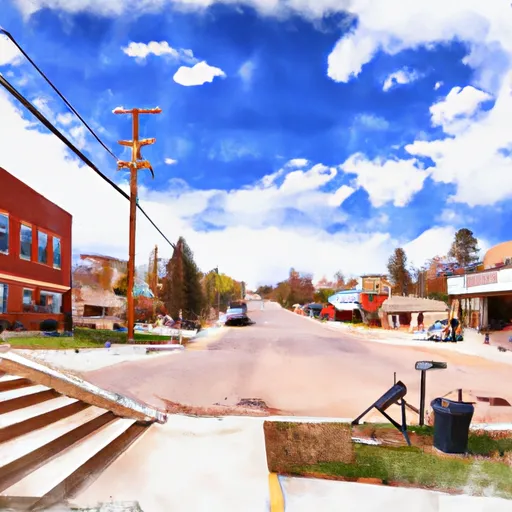-
 Snoflo Premium
Snoflo Premium
Get unlimited access to all our content
With no Ad interruptions! - Start Your Free Trial Login with existing account
Beulah
Eden Index
Climate
8.9
•
Recreation
5.3
•
Community
2.1
•
Safeguard
6.0/10

Beulah, Colorado is a small community located in the southern part of the state. The climate in this area is generally mild, with moderate temperatures throughout the year. Hydrology constituents in the area include the nearby Arkansas River, which provides opportunities for fishing, kayaking, and rafting. The area is also home to numerous hiking trails, including the Beulah Hill and Pueblo Mountain Park trails. In addition, visitors can enjoy horseback riding, camping, and mountain biking in the area. Beulah is a great place for outdoor enthusiasts who enjoy exploring the natural beauty of Colorado.
What is the Eden Index?
The Snoflo Eden Index serves as a comprehensive rating system for regions, evaluating their desirability through a holistic assessment of climate health, outdoor recreation opportunities, and natural disaster risk, acknowledging the profound impact of these factors on livability and well-being.
Climate Health Indicator (CHI): 8.9
Beulah receives approximately
466mm of rain per year,
with humidity levels near 63%
and air temperatures averaging around
10°C.
Beulah has a plant hardyness factor of
5, meaning
plants and agriculture in this region thrive during a short period during spring and early summer. Most
plants will die off during the colder winter months.
By considering the ideal temperature range, reliable water supplies, clean air, and stable seasonal rain or snowpacks, the Climate Health Indicator (CHI) underscores the significance of a healthy climate as the foundation for quality living.
A healthy climate is paramount for ensuring a high quality of life and livability in a region, fostering both physical well-being and environmental harmony. This can be characterized by ideal temperatures, reliable access to water supplies, clean air, and consistent seasonal rain or snowpacks.
Weather Forecast
Streamflow Conditions
Upper Arkansas
Area Rivers
Upper Arkansas
Snowpack Depths
Upper Arkansas
Reservoir Storage Capacity
Upper Arkansas
Groundwater Levels
Recreational Opportunity Index (ROI): 5.3
The Recreational Opportunity Index (ROI) recognizes the value of outdoor recreational options, such as parks, hiking trails, camping sites, and fishing spots, while acknowledging that climate plays a pivotal role in ensuring the comfort and consistency of these experiences.
Access to outdoor recreational opportunities, encompassing activities such as parks, hiking, camping, and fishing, is crucial for overall well-being, and the climate plays a pivotal role in enabling and enhancing these experiences, ensuring that individuals can engage in nature-based activities comfortably and consistently.
Camping Areas
| Campground | Campsites | Reservations | Toilets | Showers | Elevation |
|---|---|---|---|---|---|
| Davenport | 12 | 8,482 ft | |||
| Mueller State Park | 90 | 9,313 ft | |||
| Cheyenne Mountain State Park | 61 | 5,931 ft | |||
| The Crags | 17 | 10,120 ft | |||
| Ophir Creek | 31 | 8,884 ft | |||
| Wye | 21 | 9,773 ft | |||
| Northern Plains - Lake Pueblo State Park | None | 4,939 ft | |||
| Turkey Creek Military - Fort Carson | None | 6,346 ft | |||
| Juniper Breaks - Lake Pueblo State Park | None | 4,915 ft | |||
| Greenhorn Meadows Park | 26 | 5,938 ft |
Nearby Ski Areas
Catastrophe Safeguard Index (CSI):
The Catastrophe Safeguard Index (CSI) recognizes that natural disaster risk, encompassing floods, fires, hurricanes, and tornadoes, can drastically affect safety and the overall appeal of an area.
The level of natural disaster risk in a region significantly affects safety and the overall livability, with climate change amplifying these risks by potentially increasing the frequency and intensity of events like floods, fires, hurricanes, and tornadoes, thereby posing substantial challenges to community resilience and well-being.
Community Resilience Indicator (CRI): 2.1
The Community Resilience Indicator (CRI) recognizes that education, healthcare, and socioeconomics are crucial to the well-being of a region. The CRI acknowledges the profound impact of these elements on residents' overall quality of life. By evaluating educational resources, healthcare accessibility, and economic inclusivity, the index captures the essential aspects that contribute to a thriving community, fostering resident satisfaction, equity, and social cohesion.

